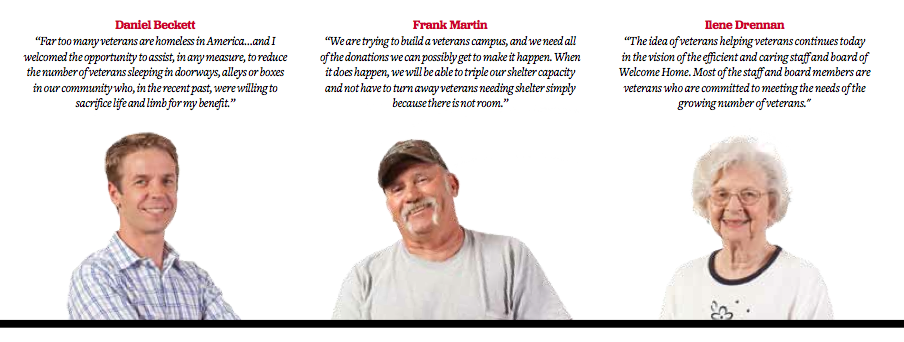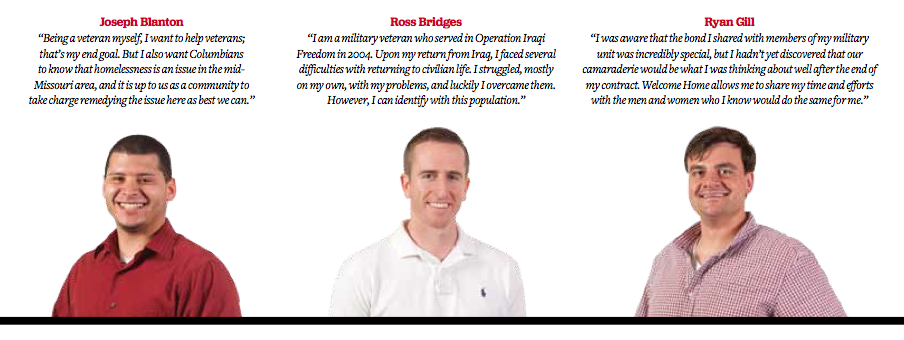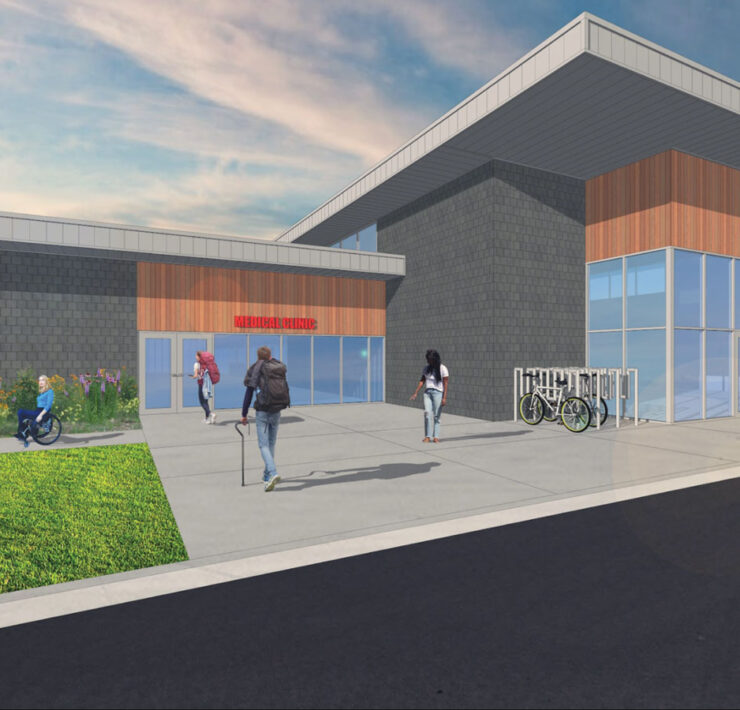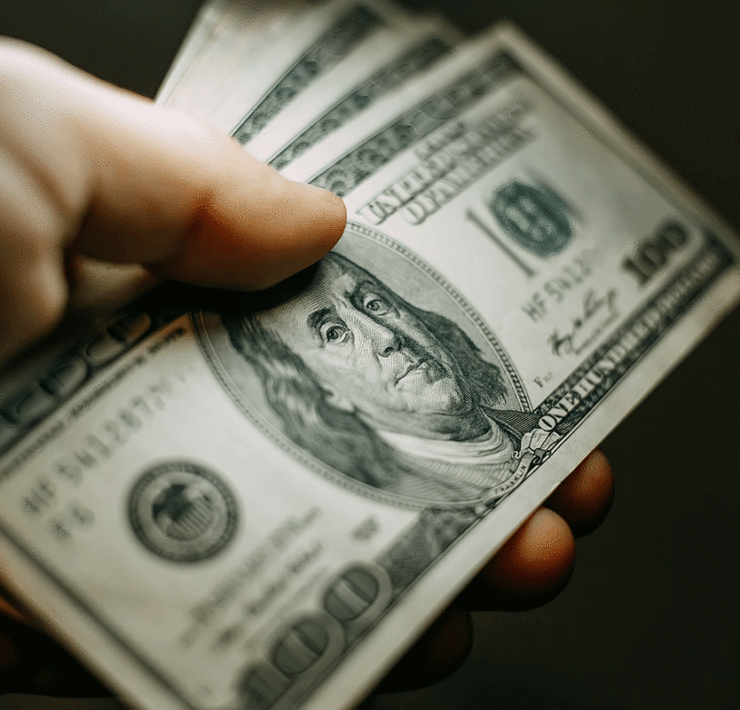Welcome Home offers a home for our veterans
As Columbia’s only homeless shelter for veterans, Welcome Home provided almost 3,000 nights of shelter to 27 homeless veterans in 2013. Since the organization’s founding in 1993 by a group of Vietnam veterans who were concerned about the increasing number of veterans sleeping on the streets, Welcome Home has evolved from simply a shelter to a transitional living facility that is committed to providing emergency food and clothing; a clean, stable living environment; case management; and advocacy to disadvantaged and displaced veterans, according to the organization’s website.
“Unlike most homeless shelters, we try to provide something that resembles as close to a ‘welcome home’ environment as possible and not a shelter,” Welcome Home’s Executive Director Aneisa Sherrill-Mattox says.
Like the organization’s mission of enabling homeless veterans to return to society as productive, self-supporting citizens, the organization’s name also carries a deep meaning.
“Welcome home is a sort of a military tradition that was to reward troops that were coming back from oversees deployments to kind of have this community of individuals who were concerned about their well-being and reintegration,” Sherrill-Mattox says.
Behind Welcome Home’s culture
Sherrill-Mattox’s primary job, in addition to overseeing agency operations, is working one on one with clients doing benefit screens and assessments to determine mental and physical health issues, identifying barriers to housing and then assisting clients in applying for some of those benefits.
“I am a 60 percent service-connected disabled veteran myself,” she says. “I really kind of felt that this particular opportunity resonated with me personally because it was a chance to work with a population that I am fond of and apply my social work skills to assist them from becoming homeless.”
Because a majority of the people at Welcome Home has more than one mental or physical disability that is impacting more than one domain of functioning, Sherrill-Mattox also does mental heath counseling with the residents. “In a typical day I may find myself doing many things,” she says. “I might be counseling a veteran who is suicidal one moment, switching gears and visiting with a donor the next minute and then switching gears again and going back into teaching mode for our interns.”
In the Welcome Home building at 1206 Rangeline St., there is room for a maximum of 12 residents, assuming there is one person on a couch, one on a cot and at least four people doubled up together, which often presents a challenge for this population, Sherrill-Mattox says.
“Whether they are homeless or have served in combat, sometimes they may develop posttraumatic stress disorder,” she says. “Being homeless places them in an undue risk for crime, violence and victimization out in a real-world situation. So one of the things we struggle with is finding space for veterans who have some complex safety issues that might be related to trauma or stressors from an environment.”
Residents at Welcome Home are responsible for keeping the building and its quarters in habitable conditions. They nominate a specific resident to be house manager who communicates with Sherrill-Mattox directly about any problems. The residents have access to a kitchen, a washer and dryer, a computer to fill out applications and keep up with family on social media, a phone and a living room with a TV. Welcome Home also has a bike checkout program and provides annual bus passes for residents. But any veteran who has some kind of need can come in for the day and use the facility, as Welcome Home doesn’t require veterans to be residents to use any of the shelter’s services.
“We have been able to provide services and extend those services to a broader population in our outreach to veterans that are in rural areas,” Sherrill-Mattox says. “We have really turned the agency from being reactive to homelessness to being more of prevention type effort. I am very proud of the culture that we have put together here at Welcome Home.”
One of the things that Sherrill-Mattox says is unique about Welcome Home’s culture is the involvement from the organization’s board of directors and the veterans who work there.
“We offer vet-to-vet, peer-to-peer services where we are able to sit down with a veteran,” she says. “From our practical experience ourselves with some of the issues that they might be struggling with, we understand and realize there are barriers to engaging with them. What we like to do is kind of strip off the rank and maybe get back down to tax where it’s another veteran counseling another veteran, and that sets us apart.”
A need to expand
Last year Welcome Home had to turn down 116 people because of the building’s lack of space, but they have still been able to provide assistance for many veterans after the organization was awarded the full amount of the Veteran Affairs Supportive Services for Veteran Families program request in summer 2013.
The SSVF program is designed to assist veterans and their families who are homeless or are imminently in danger of becoming homeless in obtaining and maintaining stable housing, according to Welcome Home’s website.
“When we introduced the VA SSVF grant, it allowed us to prevent some people to actually come into a shelter situation because they were able to find stable housing,” Sherrill-Mattox says.
But even with the grant, Welcome Home is in need of a new building so the organization won’t have to turn so many people away, Sherrill-Mattox says.
“In the current facility, we can’t serve female veterans,” she says. “As a female veteran, I am very concerned about this. Female veterans historically have had issues in engaging services with the VA. Here in Columbia, there are no specific programs for the female veteran to turn to — we are it. Because of our small space, it would simply be impractical if not impossible in order to have female veterans present here. Many of them have histories of military sexual trauma or PTSD, so placing them in an environment where we are not staffed 24/7 places them in an increased risk for victimization.”
Melissa Acton, Welcome Home’s chief financial officer who works closely with Sherrill-Mattox, says she hopes their new building will be handicapped accessible.
“We can’t have anyone in a wheelchair get into this building right now,” she says.
Currently, Meals on Wheels provides two meals a day and several meals on Fridays for the weekends for Welcome Home residents. Acton says with a bigger building, they would be able to provide meals to residents themselves.
“They provide the meals as part of their program free of charge to us,” she says. “If we were to double the size of our agency, hopefully we would be able to free up some of their resources and use some of ours to have meals around the clock or at least a kitchen and a dining room setting.
Acton says a sort of veterans campus is in the works for Welcome Home that would include the new building, medication management, increasing of staff to reduce each case worker’s individual case load and green space where they could host fundraisers and some recreational activities with residents.
What Columbia can do
Without the help of the Welcome Home staff, board members and many volunteer veterans who are former Welcome Home residents and help with repairs, the services at Welcome Home wouldn’t be possible. But both Sherrill-Mattox and Acton are now asking for Columbia’s support.
“I would like to see the common misperception of what a homeless veteran looks like diminish,” Acton says. “We are seeing much more elderly people with physical and mental problems, not just the guy standing on a corner with a bottle.”
Sherrill-Mattox says that when she signed up and joined the military, there was an understood promise that they wouldn’t leave the wounded behind. Every day we are leaving them behind on the streets, she says.
“Every time you see a homeless person out there, they may or may not identify themselves as a veteran,” Sherrill-Mattox says. “I am asking the city of Columbia, businesses and investors to invest in people. These people invested in our country, and at the very least we can build them a more welcome home of their own.”










